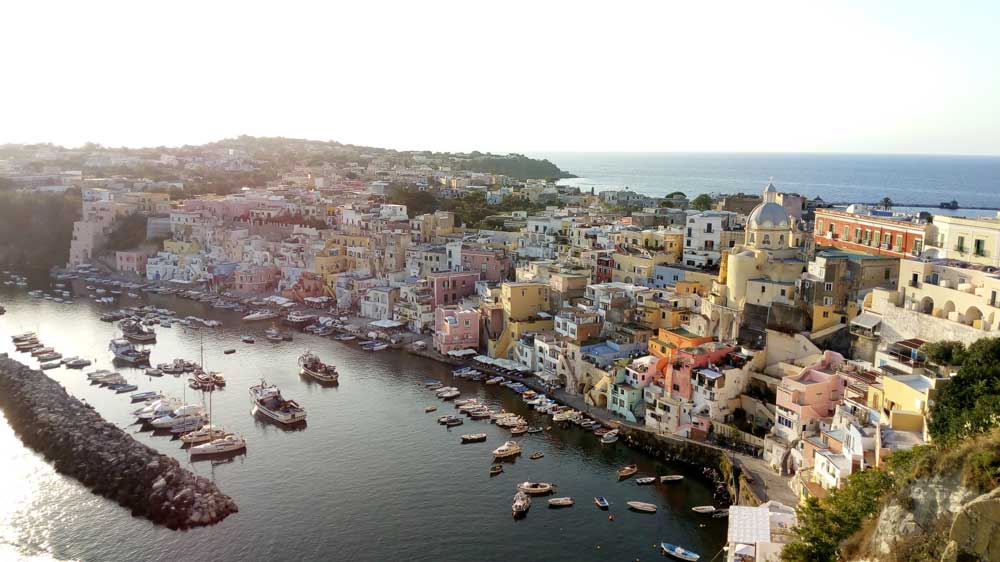
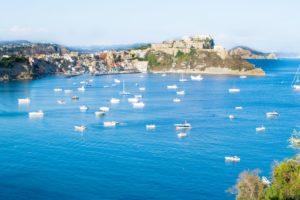
Procida![]() is about an hour by ferry from Naples and is the smallest of the Parthenopean islands. The volcanic nature gives the island – 3.75 square kilometres in area – certain landscape characteristics typical of lava-born territories: the irregular orography, the jagged coastline, the bays corresponding to their respective craters, the dark sand of the beaches, the blond tufa of the ridges, the lush, fertile gardens. It was called Prochyta precisely because, as volcanic land, it was ‘thrown up’ from the bottom of the sea.
is about an hour by ferry from Naples and is the smallest of the Parthenopean islands. The volcanic nature gives the island – 3.75 square kilometres in area – certain landscape characteristics typical of lava-born territories: the irregular orography, the jagged coastline, the bays corresponding to their respective craters, the dark sand of the beaches, the blond tufa of the ridges, the lush, fertile gardens. It was called Prochyta precisely because, as volcanic land, it was ‘thrown up’ from the bottom of the sea.
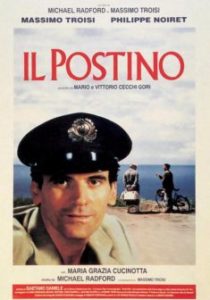 Its millenary history, starting with the ancient Mycenaeans and ending with the Bourbons, is told to us every day by its precious Mediterranean-popular and cultured architecture, its numerous churches, its traditions, sometimes even centuries old, and its deep blue sea, which has seen the local seafaring industry shine since the 18th century. Procida is a veritable treasure chest on the sea of the Gulf of Naples that bewitches the visitor like the irresistible song of a siren.
Its millenary history, starting with the ancient Mycenaeans and ending with the Bourbons, is told to us every day by its precious Mediterranean-popular and cultured architecture, its numerous churches, its traditions, sometimes even centuries old, and its deep blue sea, which has seen the local seafaring industry shine since the 18th century. Procida is a veritable treasure chest on the sea of the Gulf of Naples that bewitches the visitor like the irresistible song of a siren.
Less famous than its sisters Capri and Ischia, Procida has only recently been discovered by tourism, in fact still today the local economy is based on fishing, agriculture and general navigation. The island has had the privilege of hosting numerous film sets, among them ‘The Talented Mr. Ripley’ and ‘Il postino’, a multi Oscar-nominated film starring Massimo Troisi, of which the islanders are so fond that they have dedicated a square and a street to him.
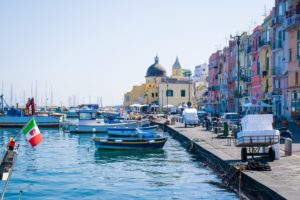
‘Sent’Co’ as the Procidans call Marina Grande![]() , with its colourfully painted buildings of the rainbow, is the postcard that greets tourists as soon as they disembark, the island’s main port is the bus terminal, numerous bars, restaurants and souvenir shops, these surrounding the Palazzo Montefusco
, with its colourfully painted buildings of the rainbow, is the postcard that greets tourists as soon as they disembark, the island’s main port is the bus terminal, numerous bars, restaurants and souvenir shops, these surrounding the Palazzo Montefusco![]() , built in the 12th century, recognisable thanks to its crenellated cornice. Near the harbour is the Chiesa della Pietà
, built in the 12th century, recognisable thanks to its crenellated cornice. Near the harbour is the Chiesa della Pietà![]() , with its Baroque bell tower, and where the wooden crucifix from 1845 is kept inside.
, with its Baroque bell tower, and where the wooden crucifix from 1845 is kept inside.
The beaches, almost all accessible, of predominantly black sand of volcanic origin are usually washed by a crystal-clear sea. Silurenza![]() is the closest to Marina Grande, Chiaiolella
is the closest to Marina Grande, Chiaiolella![]() with its fascinating monoliths, the beach of Ciraccio
with its fascinating monoliths, the beach of Ciraccio![]() , the famous beach of Pozzo Vecchio
, the famous beach of Pozzo Vecchio![]() , on which some scenes of the ‘Il Postino (the postman)’ were filmed, and finally the beach of Chiaia
, on which some scenes of the ‘Il Postino (the postman)’ were filmed, and finally the beach of Chiaia![]() .
.

The village of Terra Murata![]() is a must-see, with a view of Corricella
is a must-see, with a view of Corricella![]() offers a stupendous panorama, one of the most fascinating. Inside the village is the Palazzo D’Avalos
offers a stupendous panorama, one of the most fascinating. Inside the village is the Palazzo D’Avalos![]() , built in the Middle Ages to protect the population from attacks by sea, it was later used as a prison, where convicts and common criminals were imprisoned.
, built in the Middle Ages to protect the population from attacks by sea, it was later used as a prison, where convicts and common criminals were imprisoned.
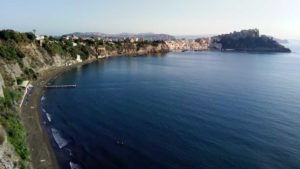 Coming down from Terra Murata is the Monastery of Santa Margherita
Coming down from Terra Murata is the Monastery of Santa Margherita![]() with the Sanctuary of Santa Maria delle Grazie
with the Sanctuary of Santa Maria delle Grazie![]() , worth a visit is the Abbey of San
, worth a visit is the Abbey of San
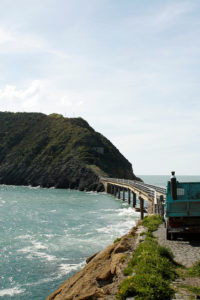
Michael Archangel![]() , dedicated to the island’s patron saint.
, dedicated to the island’s patron saint.
On Good Friday, an evocative procession takes place in Terra Murata and Piazza dei Martiri, featuring the ‘Misteri’, allegorical floats with representations of the Old and New Testaments, followed by the statues of the Madonna dell’Addolorata and the Dead Christ.
Not far from Chiaolella, at the end of the ascent of Santa Margherita Vecchia, there is the islet of Vivara![]() a naturalistic jewel of inestimable value, one of Italy’s main naturalistic destinations. In 2001 Vivara entered the Guinness Book of Records thanks to the longest Tibetan bridge in the world.
a naturalistic jewel of inestimable value, one of Italy’s main naturalistic destinations. In 2001 Vivara entered the Guinness Book of Records thanks to the longest Tibetan bridge in the world.
